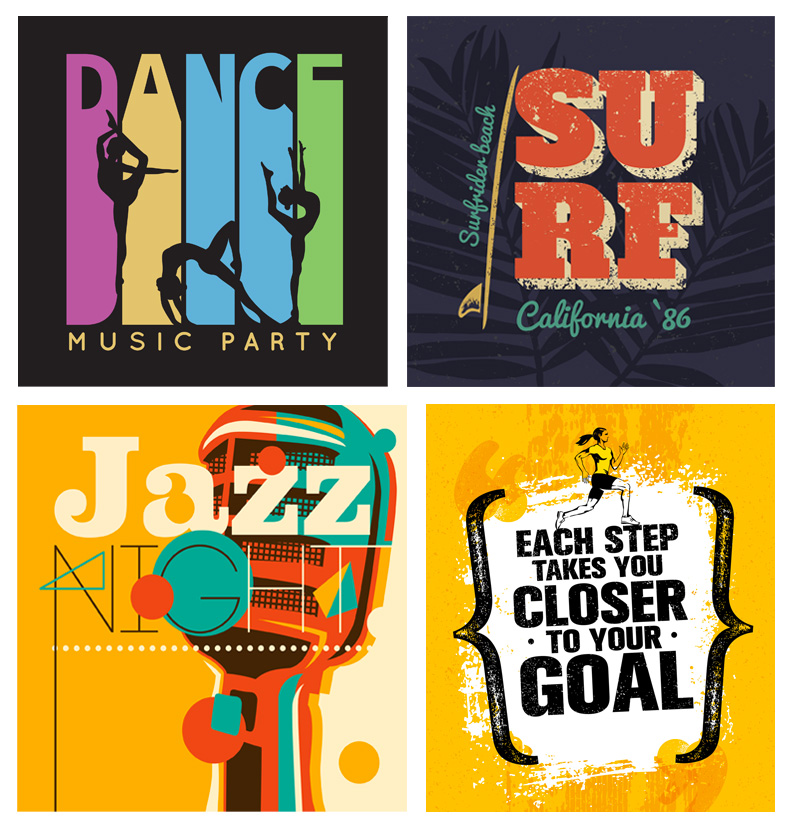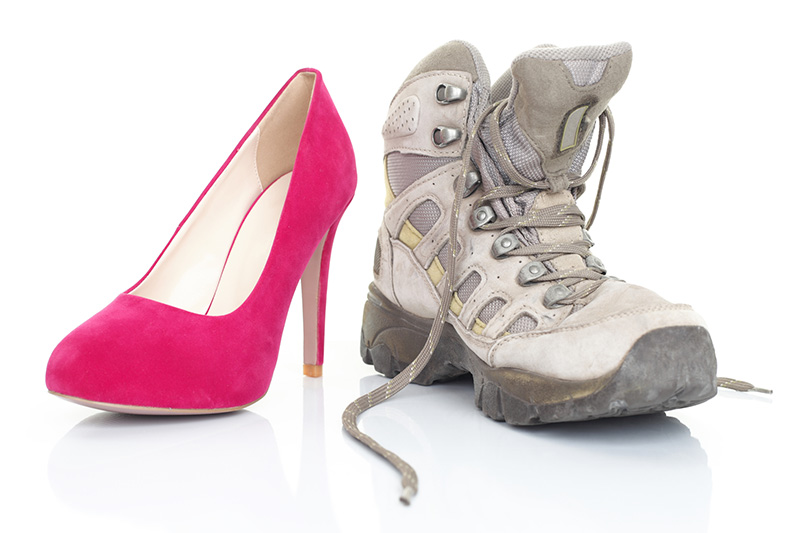Graphic design has a world of applications, but for this article, we’ll focus on how it is used to enhance your brand and your business. To fully understand this idea, it is helpful to think of graphic design as a combination of visual arts, communication, and psychology. We combine these elements to tell a story and evoke a feeling about our company, products, and services, helping our audience to easily identify and connect with us. By doing a little research, and pulling these elements together in the right ways, we build the foundation for a strong brand.
The Visual Elements of Graphic Design
When most people think of graphic design, the first things that come to mind are…well, graphics. On a very basic level, we think about images, colors, fonts, and form. Let’s dive into a few of these elements to find out how they might be used to convey a message.
Color
We all know that color has a strong effect on human emotion and psychology. Blues and greens have a calming effect and provide a sense of security; for example, while reds and oranges are more high-energy colors that do everything from evoking caution to encouraging appetite. A bank may use blue or purple to convey a sense of security and encourage trust, while a charity may go with a yellow or orange when trying to create an atmosphere of cheerfulness or optimism.
Typography
As with color, we can also deliver a message and feelings through the fonts that we choose, and how we use them. Serif fonts such as Times New Roman or Garamond can create a feeling of respect or authority, while non-serif fonts such as Helvetica and Verdana are more modern feeling and objective. Script fonts can be used to convey elegance, femininity, and creativity. In the recent past, font usage on the web has been very limited, but that has changed almost completely. In almost any design medium, we can now use fonts to help deliver our message.
Form: Shapes, Lines, and Space
Though each of these elements can be explored individually to a much greater degree, shapes, lines, and space are all elements of form. The types of shapes that we have to work with are geometric, abstract, and organic. Organic shapes may be used to deliver a creative or feminine message, generally speaking, while hard edges and angles may be used for technology or corporate designs. Lines and space can be used in the same way. It’s important to remember that everything that is added to your canvas, whatever the medium might be, creates these elements. Many people do not consider the space in between elements, but space evokes emotion and understanding and is also capable of conveying messages in the same way that other types of form are. Proper spacing not only visually connects elements on the page but also affects legibility and the overall feeling of the design.
Scale, Balance, and Symmetry
These elements can be used to create feelings from calm to excitement, and from harmony to dissonance. The full scale of emotion can be explored. A design does not necessarily have to be symmetrical in order to be balanced. Larger elements can be used to emphasize information while balancing out with smaller elements to support the overall communication. Symmetry can be used to give elements equal importance or, mixed with other design elements such as color, can be used to create opposite feelings for elements of the same size.
Design and Communication
It is clear at this point that we use design to communicate a message. In order to determine the type of message that we are trying to convey, we look to the business profile. Your business profile includes your company mission, history, values, products and services, differentiators, competition, and basically everything to do with what your company does and why you do it.
Any good design begins with a business profile. After all, you need to understand what message you are trying to convey before you can choose colors, fonts, shapes, and all of those other fun elements that might help to convey that message. Our goal is to try to reach your audience on an emotional level, and to do that we need to understand your audience. We need to understand what their needs are, convey our understanding of those needs, relate to those needs, and present a message about how we can help to solve a problem, improve an experience, or make life better in some way.
Once we know what message we are trying to deliver, we can then put our design tools to good use. But designing without a message is like building without a blueprint. The message is the foundation for the design and ultimately for your brand.
Psychology and Design
Someone who is looking for new shoes may be looking to satisfy a number of different needs (besides just new footwear). Some shoppers are looking for durability and longevity, while others are looking for fashion and style. Proper use of design elements can help to convey either of these feelings. However, though they are both shoes, there are very different emotions associated with the two types of shoes. It is important to consider and relate to each of these customers. The other factor in this example is brand. Inconsistency in design is a brand killer. So, you will want to find a way to relate to both customers while staying true and consistent with your brand. Though the “fashion” customer is not searching for a work boot, they will feel more secure in buying your product if they get a feeling of consistency across your brand.
This is one simple example of how psychology can play into your design choices which also illustrates the importance of understanding your business profile and building your foundation before beginning to design.
Bringing It All Together
Graphic design is a tool for communication of a story or message in a way that relates to the audience and helps them to connect. We begin with the story itself; your business profile. By understanding the message to be conveyed, and the emotions that we want our audience to feel about our products or services, we are able to pull together all of the elements of graphic design into a composition that our customers relate to. By combining all of these elements consistently, over time our designs become one of the primary driving forces for a strong brand that people will know and love.





